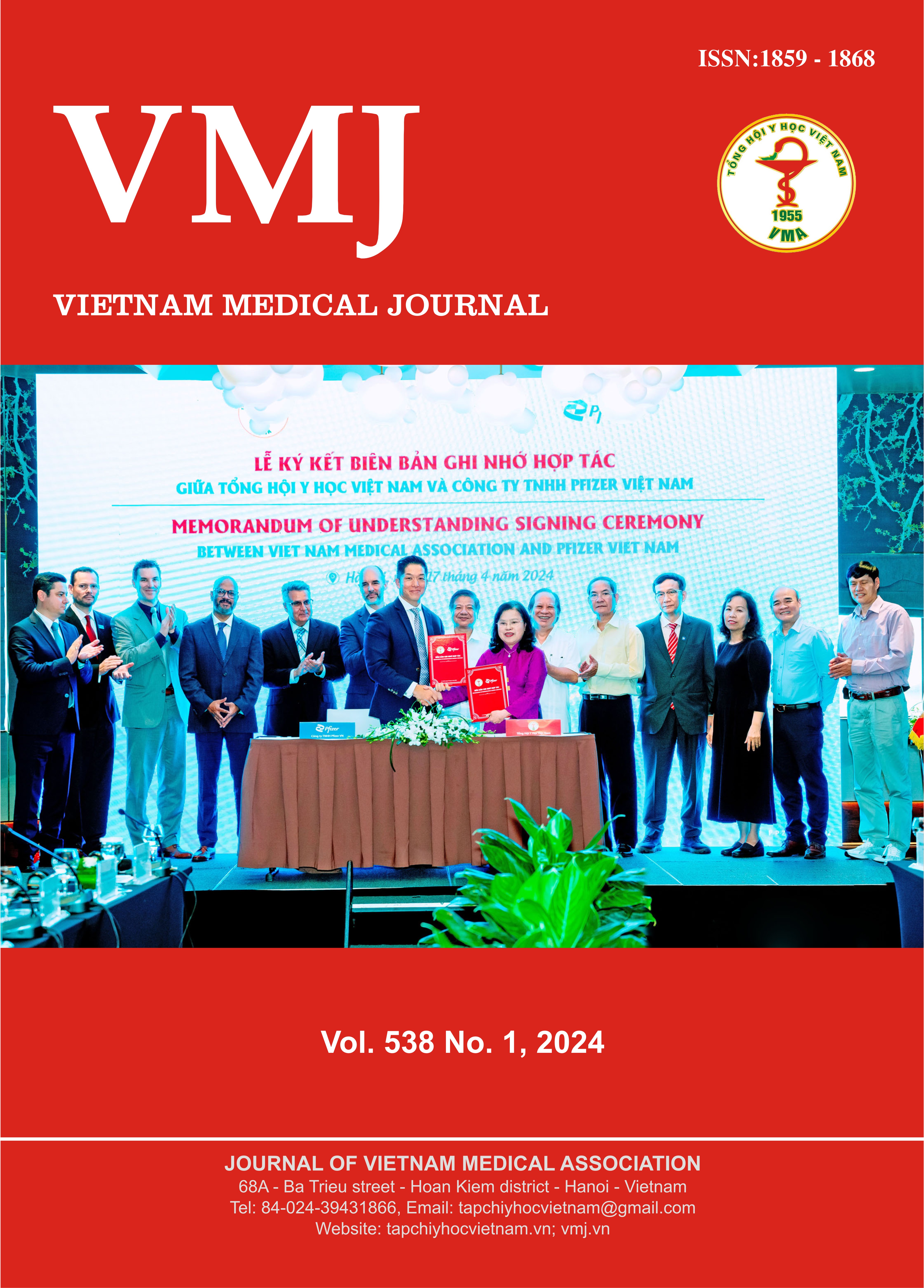EVALUATING THE EFFECTIVENESS OF THE CRITICAL VIEW OF SAFETY IN LAPAROSCOPIC CHOLECYSTECTOMY AT BINH DAN HOSPITAL
Nội dung chính của bài viết
Tóm tắt
Background: The aim of this study was to assess the safety of laparoscopic cholecystectomy using "The Critical View of Safety" (CVS) technique for the management of gallbladder stone disease. Subjects and methods: Prospective study, describing a series of cases of patients undergoing laparoscopic cholecystectomy with CVS applied to treat gallbladder stones at Binh Dan Hospital from January 2022 to October 2022. Results: We enrolled 89 patients and recorded the following outcomes: the success rate was high, at 97.8%. The failure cases were due to large stones blocking the gallbladder neck and severe adhesions in the hepatocystic triangle in necrotizing cholecystitis. There is a statistically significant difference in the success rate of achieving CVS between groups: gallbladder condition (p=0.02), degree of adhesion inflammation of the hepatocystic triangle (p=0.039). The overall bleeding complication rate was 10.3% (9 cases) and during CVS was 6.7% (6 cases). The overall gallbladder perforation complication rate was 8% (7 cases) and during CVS was 4.4% (4 cases), with no biliary tract injuries. The postoperative complications included fluid collection in the gallbladder bed in 10.3% of cases and surgical wound infection in 2.3% of cases. All were successfully treated with conservative measures. Conclusion: We concluded that CVS is a necessary, safe, and effective diagnostic method in laparoscopic cholecystectomy for gallbladder stone disease.
Chi tiết bài viết
Từ khóa
The critical view of safety, Gallbladder stones, Laparoscopic cholecystectomy
Tài liệu tham khảo
2. Brunt LM, Deziel DJ, Telem DA, et al. Safe Cholecystectomy Multi-society Practice Guideline and State of the Art Consensus Conference on Prevention of Bile Duct Injury During Cholecystectomy. Annals of surgery. Jul 2020;272(1):3-23. doi:10.1097/sla.0000000000003791
3. Nassar AHM, Ng HJ, Wysocki AP, Khan KS, Gil IC. Achieving the critical view of safety in the difficult laparoscopic cholecystectomy: a prospective study of predictors of failure. Surgical endoscopy. Nov 2021;35(11):6039-6047. doi:10.1007/s00464-020-08093-3
4. Hai. TEL. Laparoscopic cholecystectomy in acute gallstone cholecystitis. Proceedings of the 11th Vietnam Surgical Congress scientific topics. 2004:20-21.
5. Hanh VB. Research on some clinical samples and results of laparoscopic cholecystectomy in the treatment of acute cholecystitis caused by stones. Military Medical Academy, Military Medical Academy; 2010.
6. Sanjay P, Fulke JL, Exon DJ. 'Critical view of safety' as an alternative to routine intraoperative cholangiography during laparoscopic cholecystectomy for acute biliary pathology. Journal of gastrointestinal surgery : official journal of the Society for Surgery of the Alimentary Tract. Aug 2010;14(8):1280-4. doi:10.1007/s11605-010-1251-6
7. Koong JK, Ng GH, Ramayah K, Koh PS, Yoong BK. Early identification of the critical view of safety in laparoscopic cholecystectomy using indocyanine green fluorescence cholangiography: A randomized controlled study. Asian journal of surgery. Mar 2021;44(3):537-543. doi:10.1016/j.asjsur.2020.11.002
8. Hai NV. Results of laparoscopic cholecystectomy in acute cholecystitis. Medicine in Ho Chi Minh City. 2005;9(2):109-113.


